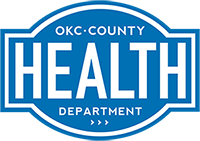Epidemiology
The Epidemiology Department at OCCHD works to protect and promote the health of the citizens of Oklahoma County. The Acute Disease Investigation and Data Management sections work together to gather community-centered information, assess community needs, prevent and control communicable diseases, and make health-related information available to the public and to community policy makers.
Location: 2600 NE 63rd Street, Oklahoma CIty, OK 73111
Epi-On-Call is available 24/7 at this number: Office phone – (405) 425-4437
May is Hepatitis Awareness Month!
Check out this post for more information about how to prevent and treat viral hepatitis.
SERVICES
Our staff consists of epidemiologists, biostatisticians, public health nurses and support staff, and our main goal is to work together to provide a wide range of services.
ACUTE DISEASE SURVEILLANCE & INVESTIGATION
- Active and passive surveillance for disease and adverse occurrences
- Investigation of reports of reportable communicable disease in Oklahoma County
- Outbreak investigations
- Recommendation of appropriate prevention measures, treatment and control for communicable diseases
- Monitoring and investigation of reports of unusual health conditions in Oklahoma County
- Coordination of public health surveillance and disease control measures with local health care professionals, facilities, the Oklahoma State Department of Health (OSDH), and other state and local agencies and institutions
- Continued development and utilization of syndromic surveillance systems, including the National Syndromic Surveillance Program’s (NSSP) BioSense Platform.
- Response to disease-related inquiries from residents and healthcare providers
- Education about communicable diseases and prevention of disease
ASSESSMENT & DATA MANAGEMENT
- Data analysis for OCCHD and partner agencies
- Geographic Information System (GIS) consultation for map development
- Database development
- Program/service planning
- Risk assessment
- Community health assessments
Wellness Score 2021
RESOURCES
FACT SHEETS
Please visit our Fact Sheets page to view the facts on various diseases.

